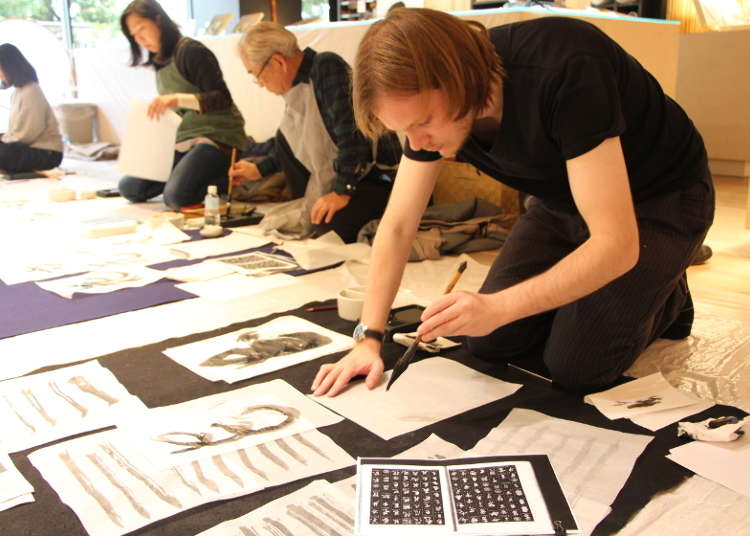
Inside 'Pigment': Stationery Taken to a Whole New Level With Traditional Japanese Calligraphy! (Video)
- Written by: Quentin Weinsanto
Art Materials Lab PIGMENT really is a place that impresses as soon as you set foot inside: the building is spacious, with a comfy atmosphere that makes you feel like you’re at home. This gorgeous art supply store is located on Tennozu Isle, a small island in Tokyo Bay that hosts plenty of art shows and performances.
The store features around 200 antique ink sticks, 50 kinds of animal glues, and around 4,500 colors of different pigments: with this, you are sure to find a color that you will like! But what makes the store different are the regularly organized workshops.
Held by art school professors or painting tool manufacturers, you can discover Japanese painting techniques, carving signature stamps, or even oil painting. For me, it would be Japanese calligraphy, also known as shodo.
An Introduction to Japanese Calligraphy
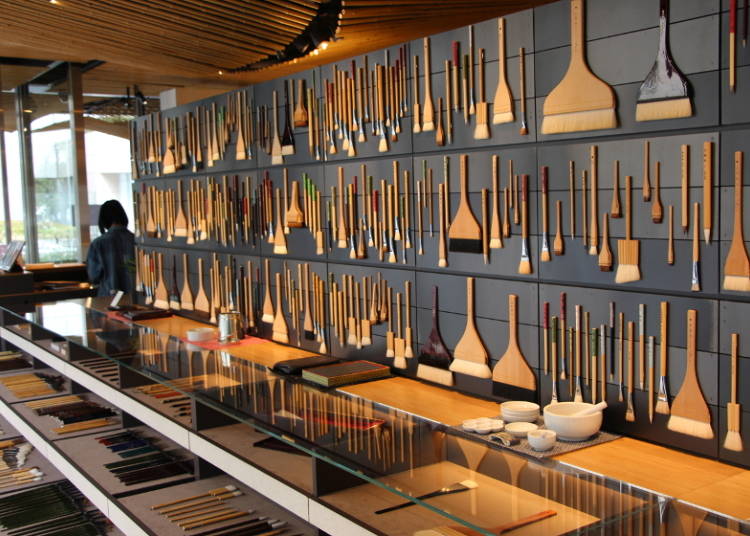
Despite calligraphy being one of the most famous Japanese traditional arts, it was the first time that I was trying shodo first-hand. Our teacher, Kasetsu, was born in Kyoto and started calligraphy more than 20 years ago. The workshop held at PIGMENT lasted for about four hours, time that is needed to get a real introduction to this art’s meaning. We were about 10 participants.
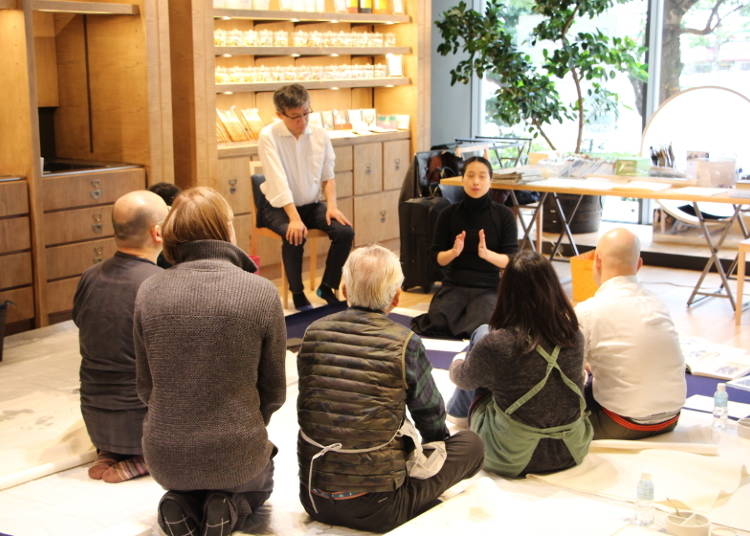
It all started with a short explanation of the history of shodo. Japanese calligraphy's beginning was importing the Chinese writing system, named kanji, in the early 5th century. It was then mainly influenced by Chinese masters and new writing styles. However, in the 10th century, one of the first uniquely Japanese styles of calligraphy appeared: wayo shodo.
This was a response to the increasing need to express Japanese aesthetics via calligraphy. Other the centuries, Japanese calligraphy continued to evolve under the influence of Chinese classics, but also Zen Buddhism in the 12th century.
Before Trying, Know the Tools
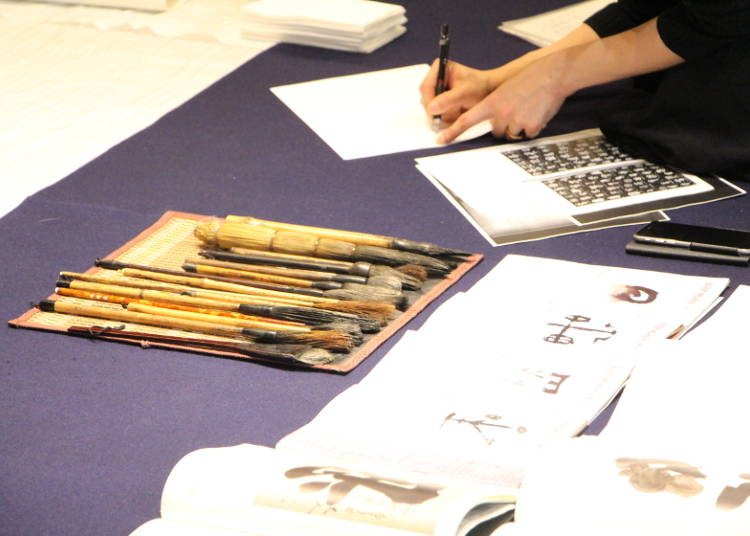
After this introduction, about two dozens of brushes were presented in front of us. They all had different shapes and used various materials: wild boar, goat’s hair... and we had to pick one. I chose a brush made from horse tail.
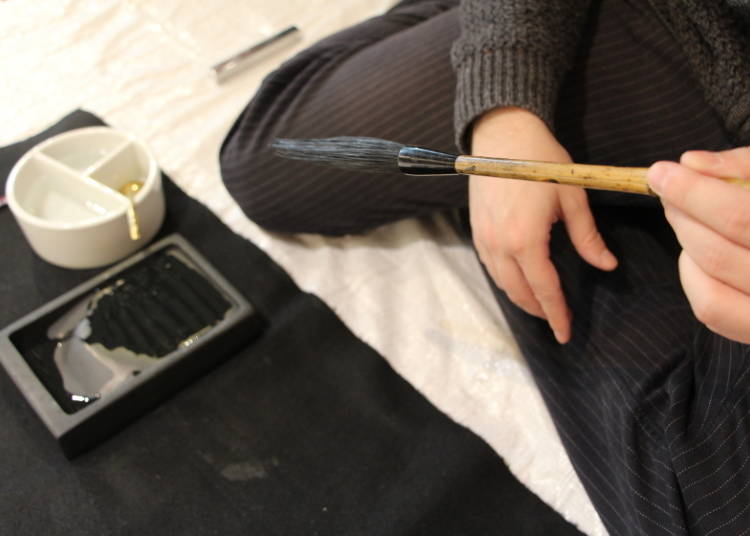
Then comes the ink. I decided to opt for a reddish and bluish black ink. To get the actual ink, it is necessary to pour some water on the ink stone, then grind the ink stick in a circular motion while keeping it upright. When the ink has a thick and deep black color, it is ready. As it was the first time I was trying this process, I couldn’t get it right straight away: too thick and the writing will not be fluid, too thin and the ink will flow down from the brush too fast.
Shodo: The Quest for the Perfect Line
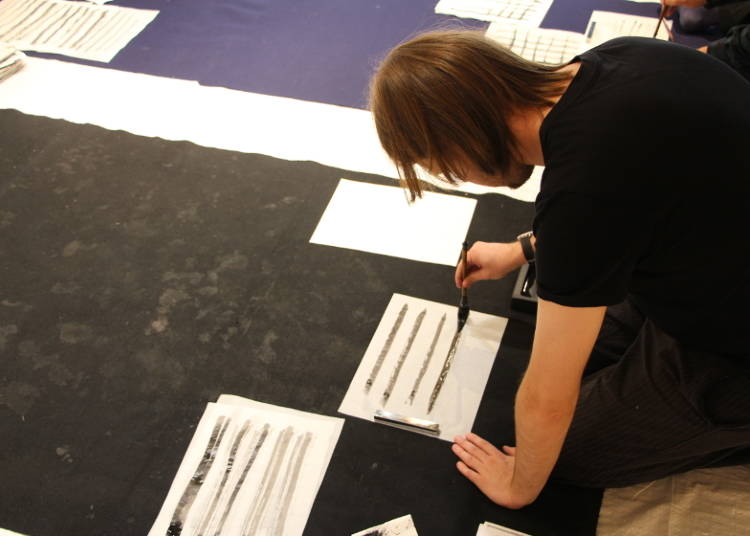
The next step of this initiation to Japanese calligraphy was to apprehend the different tools and techniques by drawing several lines. While doing that, we had to ask ourselves: Which one do I like? What kind of shape? Why?
The hairs of my brush were particularly long and thick, which made them quite difficult to manipulate at first. However, I really liked the lines I could draw with it: far from being solid, they had a lot of small holes in each brushstroke, which was appealing to me. I actually find beauty in imperfection, and that expressed it quite nicely: indeed my lines were far from perfect, but that’s why I liked them! The other workshop participants also found their own “style”: one used a very small brush that helped him draw very small straight lines while keeping good control on his movements, and he stuck with it until the end.
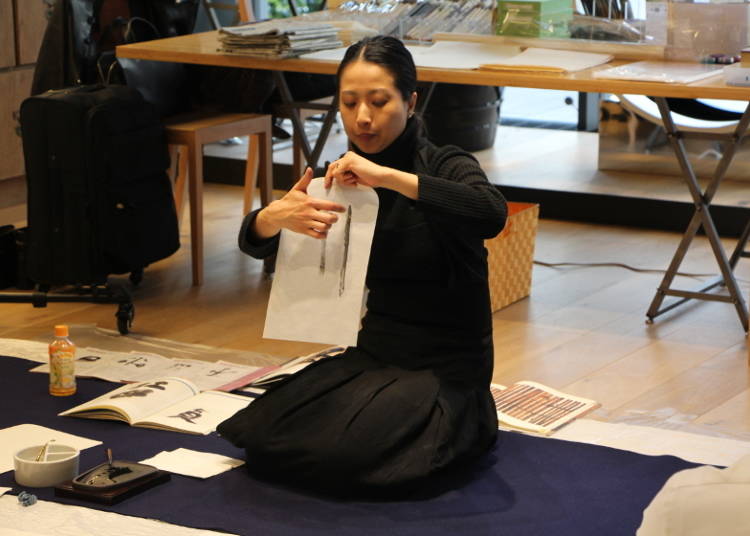
To go further, our teacher told us to try new ways of drawing: while the brush should be used vertically, angling it downwards ever so slightly greatly changes the shape of the line: it gives a thick, soft tone to it. The speed is also an important point, as it help expresses the writer’s feeling at that specific moment.
After drawing about two dozen lines, I decided to try another brush, this time smaller and that seemed to be easier to handle. Even if I liked the horse-tail, I felt that this one would help me more when the time came to actually draw a shape.
Getting the Shape Right
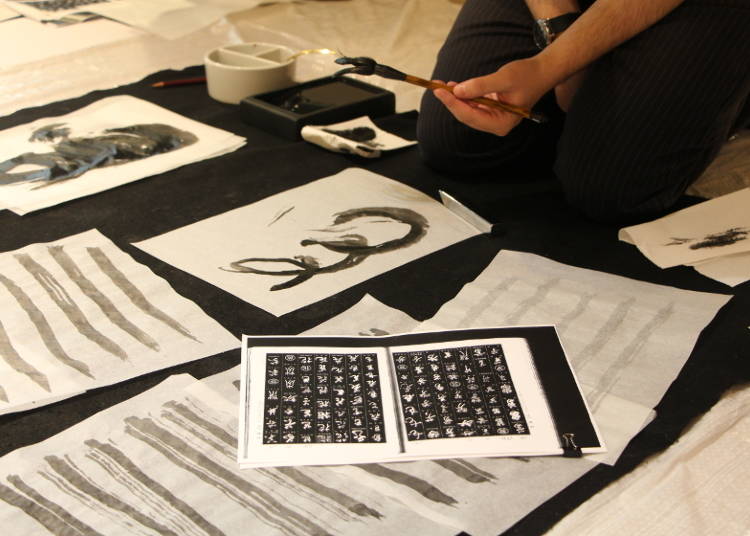
When we all felt confident enough, we moved to the topic of the day: flowers. We were presented several stylized kanji representing flowers and had to choose one that we liked.
Mine was spiral-shaped. It took several tries to learn how to draw it, as a good amount of ink was needed but also more fluidity in the gesture. To achieve this, it was important to open the lower part of the arm, so I could move more freely. Like for the lines, our teacher then asked us to try different approaches: change the speed, the pressure on the brush or simply the position of the drawing on the paper. Then, to ask ourselves the question again: what does it mean to us?

For me, when I was looking at my drawing, I was imagining a small flower under strong winds that would come from the right side of the paper. However, the spiral in itself was a representing of flower’s short life: a path that would ultimately lead to death, with the small stroke on the right representing rebirth.

The exchange we had with other participants was particularly interesting, as it clearly showed that everyone had their own sensitivity when it comes to Japanese calligraphy. Overall, a unique experience that is well worth a try, so why not try Japanese calligraphy on your next trip to Tokyo?
-
Art Materials Lab PIGMENT画材ラボ PIGMENT
- Address TERRADA Harbor One building 1F, 2-5-5, Higashishinagawa, Shinagawa-ku, Tokyo, 140-0002
-
Nearest Station
Tennozu Isle Station (Rinkai Line / Tokyo Monorail Haneda Airport Line)
3 minutes on foot
- Phone Number 03-5781-9550
Sumi-e workshop fee: 8,000 yen per person
Opening Hours: 11:30 a.m. – 7:00 p.m.
Closed on Mondays & Thursdays
Quentin Weinsanto is a journalist living in the area of Adachi-ku in Tokyo. Being in Japan since 2011, he always love to write about interesting stories or places to visit.
- Area
- Category
*Prices and options mentioned are subject to change.
*Unless stated otherwise, all prices include tax.
Popular Tours & Activitiess
Recommended places for you
-

Kappabashi Street
Old Towns (Shitamachi)
Asakusa
-

Senso-ji Temple
Temples
Asakusa
-

Naritasan Shinshoji Temple
Temples
Narita
-

Ueno Zoo (Ueno Zoological Gardens)
Zoos, Aquariums & Botanical Gardens
Ueno
-

The Imperial Palace
Other Architecture
Tokyo Station
-

TOKYO SKYTREE®
Landmarks
Ryogoku / TOKYO SKYTREE(R)
-

How to Get Don Quijote's Exclusive 2025-2026 Winter Gift (+Tax-Free Savings)
-

New in Ginza! Air BicCamera Ginza Opens with a Faster, More Convenient Shopping Experience
by: Guest Contributor
-

Japan’s Shinkansen Is About to Change Travel in an Unexpected Way
by: Guest Contributor
-

Strawberries, Style, and Tokyo’s Coolest Neighborhood: Winter Afternoon Tea in Kichijoji
by: Guest Contributor
-

First Japan Cherry Blossom 2026 Forecast Announced! Here's When & Where to See Sakura in Japan
-

Jujutsu Kaisen Takes Over JR East With a Wrapped Shinkansen This Winter
by: Guest Contributor
Inspiration for Accommodations
-

Enjoy Mt. Fuji from the Comfort of Your Room! Recommended Ryokan with Mt. Fuji View
-

Stay Near the Cherry Blossoms! Hotels for Cherry Blossom Viewing in Tokyo
-

Family-Friendly Hotels with Free Shuttle to Disneyland: Convenient Access for a Magical Stay
-

Top Ranked Hakone Hotels with Mt. Fuji View: Enjoy Stunning Scenery from Your Private Space
-

Convenient Tokyo Hotels with Airport Shuttle: Ideal for Families and Heavy Luggage
-

Stunning Tokyo Tower View Hotels: Enjoy Spectacular Scenery from Your Private Space
-

Convenient Asakusa Hotels with Kitchens: Ideal for Extended Family Visits
-

Experience Luxury: Hakone's 10 Best Five-Star Accommodations
-

Enjoy Mt. Fuji Autumn Leaves! Top Hotels Near the Popular Autumn Leaves Corridor
-

Experience Hakone Fall Foliage from Your Room with Stunning Views
-

Essential Tokyo: The Complete Guide to Ikebukuro Station
-

Secrets to Shopping in Japan: Guide to Annual Sales in Japan & Where to Shop
by: Miyu Shimada
-

Why ukiyo-e is amazing
-

Complete Guide to Buying Japanese Medicine in Japan: Phrases and Vocabulary You Need to Know
-

JR Edition: Visit all of Tokyo in one Day with the Tokyo Metropolitan District Pass!
-

Kichijoji – Explore Tokyo’s Top-Rated Stylish Suburb in Half a Day!
- #best ramen tokyo
- #what to buy in ameyoko
- #what to bring to japan
- #new years in tokyo
- #best izakaya shinjuku
- #things to do tokyo
- #japanese nail trends
- #what to do in odaiba
- #onsen tattoo friendly tokyo
- #daiso
- #best sushi ginza
- #japanese convenience store snacks
- #best yakiniku shibuya
- #japanese fashion culture
- #best japanese soft drinks













